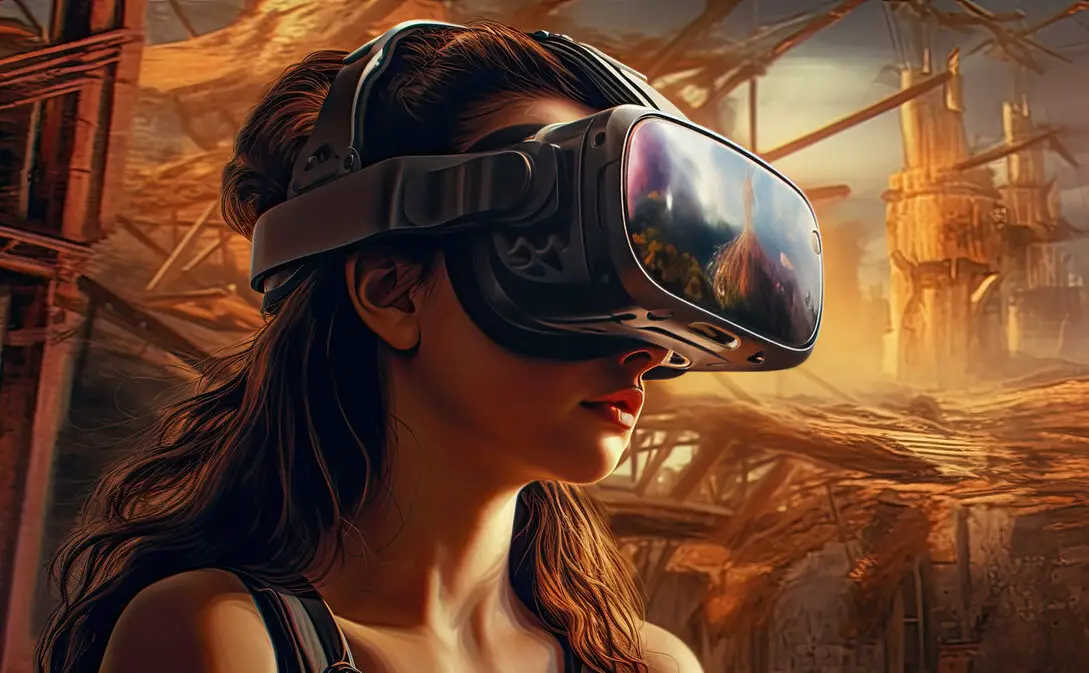Dive into the groundbreaking intersection of journalism and virtual reality (VR) in this riveting exploration that unveils how VR is revolutionizing storytelling. Discover how immersive experiences transport audiences to the heart of news stories, fostering deeper understanding and empathy, while also examining the challenges and ethical considerations that accompany this transformative medium. Join us on a captivating journey into the future of journalism, where VR’s power to redefine news consumption promises a paradigm shift in storytelling and audience engagement.
In the ever-evolving landscape of journalism, the pursuit of innovative storytelling techniques has become a driving force. Virtual reality (VR) emerges as a transformative medium, offering a unique and immersive experience that has the potential to revolutionize the way news is delivered and consumed. VR’s ability to transport audiences to the heart of events, fostering deeper understanding and empathy, promises to reshape the journalistic landscape.
Immersive Storytelling: Bridging the Gap Between Reality and Audience
VR journalism breaks free from the constraints of traditional media, allowing viewers to step into the shoes of those involved in news stories. Through 360-degree videos and interactive experiences, audiences can now gain a firsthand perspective of events, from witnessing the aftermath of a natural disaster to exploring the intricacies of a conflict zone.
This immersive approach to storytelling fosters a deeper connection between the audience and the subject matter, breaking down barriers and creating a sense of shared experience. By placing viewers within the narrative, VR journalism has the power to evoke emotions, stimulate thought, and inspire empathy, leaving a lasting impact on the audience.
Unveiling the World Through a New Lens: VR’s Impact on Journalism
VR’s transformative potential extends beyond mere entertainment; it holds the power to reshape the very fabric of journalism. By providing access to otherwise inaccessible locations and perspectives, VR journalism can bring to light stories that might otherwise remain untold.

Photo by Joel de Vriend on Unsplash
Imagine immersing yourself in the daily lives of refugees, witnessing the plight of those affected by climate change, or experiencing the challenges faced by frontline workers in war-torn regions. VR journalism has the power to amplify these voices, giving them a platform to share their stories and connect with audiences worldwide.
Challenges and Considerations: Embracing VR Responsibly
Despite its immense promise, VR journalism also presents unique challenges that must be carefully considered. Ensuring ethical and responsible storytelling is paramount, as VR’s immersive nature can blur the lines between reality and simulation. Journalists must be mindful of the potential psychological impact their creations may have on viewers.
Additionally, the accessibility of VR technology remains a concern. While mobile VR headsets offer a more affordable option, they often compromise on quality and immersion. As VR technology continues to evolve, ensuring that content is accessible to a wider audience will be crucial for its widespread adoption.
The Future of Journalism: Embracing the Power of VR
VR journalism stands at the forefront of a new era in storytelling, offering a transformative medium for connecting audiences with news in an unprecedented way. As VR technology matures and its accessibility expands, its impact on journalism is poised to grow exponentially.
VR journalism has the potential to redefine the way we consume news, fostering deeper understanding, empathy, and engagement. It is a medium that demands our attention, challenging us to rethink the boundaries of storytelling and reimagine the future of journalism.




